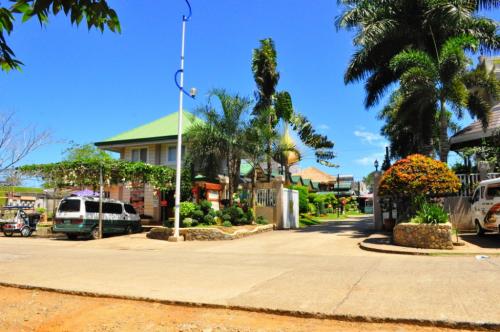Corella,
BoholTarsiers (Tarsius Syrichta) measures 4 to 5 inches and is considered as the world’s smallest primate. Its size is no longer than an adult man’s hand and weigh only about 113 to 142 grams or four to five ounces. The primate belongs to the more primitive sub-order Prosimii or prosimian that dates back 45 million years.
With its tail longer than its body, it has large brown eyes, hairless ears and long finger-like claws. It has gray fur and a nearly naked tail. Their long, partly hairless tail arcs over their back when they hop on the ground. Tarsiers have large mesmerizing eyes, each of which is bigger than its brain.
Rotating its head 180º in each direction, the animal can also leap even up to 10 feet and agilely maneuver itself from tree to tree. This ability may be due to the fact that they have extra-long tarsal bones which form their ankles and enable them to leap so high. The tarsiers name was derived from the word ‘tarsal’.
Tarsiers are nocturnal creatures, like the owls – sleeping during daytime yet very active at night. They hide in hollows close to the ground; hunts and feeds mainly on fruits and insects such as cockroaches, crickets, and sometimes small lizards. Local folks believe they eat charcoal but in fact they only get the maggots or insects inside burned wood.
This particular animal’s cry is a loud piercing single note. When they gather, they have a chirping, locust-like sound, and when contented emits a soft sweet birdlike twill.
Tarsiers in captivity are quite tame. One can fondle them and allow them to run up ones arms to the shoulders and back. Quite ticklish, yes, but they’re so cute! They easily get scared, though, and scurries back to the shrubs and hide.
In fact, only five species of the tarsier exist: four can be found in Indonesia and the specie, Tarsius Syrichta, lives deep in the woods of Bohol Island in the Visayas. These small furry creatures can also be found in the islands of Samar, Leyte and Mindanao.
Before, the tarsiers have inhabited the rainforests worldwide but have dwindled and now exist only in said islands of the Philippines, in Borneo and Indonesia. In the 1960’s, they were a common sight in the southern part of Bohol, but now only an estimated 1000 exists in the wild. They were once protected by the humid rainforests and mist-shrouded hills but were affected by the destruction of their natural habitat thru both legal and illegal logging, slash-and-burn agricultural practices that greatly diminished the forested areas. They were also victims to poachers who caught them and sell them as stuffed tarsier mementos to tourists.
To stop the fast dwindling number of tarsiers from going extinct, past President Fidel V. Ramos declared them as especially protected specie via Proclamation 1030. To support Pres. Ramos’ drive for preservation of the tarsiers, concerned citizens formed the Philippine Tarsier Foundation, a non-stock, non-profit organization. They are now being supported by the Department of Environment and Natural Resources and the Department of Tourism.
Approximately 134 hectares of land between the municipalities of Corella and Sikatuna has been set aside as the Philippine Tarsier Sanctuary. The area is maintained and operated by the Foundation.
The Foundation established the Tarsier Trail, which runs thru the interior portions of the towns of Corella, Sikatuna, and Loboc. The trail begins in Corella where efforts have been made to breed the tarsier in captivity.
The trail passes thru the natural habitat of the tarsier and winds among a wide variety of flora and fauna. Mahogany, teak and other trees aside from many varieties of palm, fern, bamboo, and other plants adorn both sides of the path.
An estimated 500 tarsiers live in the dense forests, which are divided into colonies having three up to 10 adults and their offspring per colony. Trekkers will also be treated to spectacles of serpent eagles, woodpeckers, parrots, grass owls, pigeons and parakeets that also inhabit the area. If lucky enough, one may get a glimpse of the Philippine Civet Cat.
To date, the Philippine Tarsier Foundation has acquired 7.4 hectares of land in Corella, Bohol and enclosed it with a seven-foot high fence to guard and protect the tarsiers from predators like feral cats and also from poachers and hunters. They roam freely inside the enclosure though at night some climb out of the fence to search for food farther into the forest. Before daybreak, they return as if observing a curfew.
The Foundation also runs a Tarsier Research and Development Center, which serves as a visitor center and venue for research, as well as a habitat preserve. Here, trekkers will be oriented with the unique characteristics and habits of the animal through photos and audio-visual presentations.
There are other Tarsier Sanctuaries established in the Bohol Province aside from Corella. In Corella, the sanctuary is located 10 kilometers from Tagbilaran City. In Loay town is the River Watch Tarsier Sanctuary, also a fenced preservation area. Another fenced sanctuary can be found in Loboc town.
Candijay town also has their own tarsier sanctuary. The town is 92.2 kilometers from Tagbilaran City. Here, the tarsiers are not fenced in. They are allowed to roam in their natural habitat freely and undisturbed. The municipality has 2,360 hectares of remaining upland forests as preservation area.
There are other caged tarsier sanctuaries in Loboc and Sagbayan Peak. They are only small enclosures. In Loboc, beside the main road, a family has a small caged sanctuary. The tarsiers there are so tame, you can fondle them. But concerned people does not approve of this practice for the tarsiers are easily traumatized and if they don’t die suddenly, they however cannot breed.
Source:
